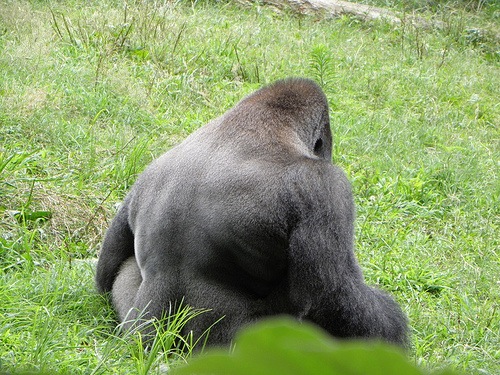 Evolution
Evolution
 Intelligent Design
Intelligent Design
Thank Darwin for Dysteleology! Evolution Can’t Lose

A short article in Science, “The Burdens of Being a Biped,” argues for evolution based on considerations of dysteleology. It claims that “A brief tour of the body reveals a number of design flaws.” The problem, the article says, is that humans are built upon a quadrupedal body plan that wasn’t “designed” to walk upright. This supposedly explains why we commonly suffer from back and other problems related to our bipedal locomotion.
Science quotes evolutionary anthropologist Bruce Latimer who asserts,
We’ve taken a body that was adapted to being horizontal to the ground and made it erect … We’ve had to change nearly every bone in the body, and as a consequence, there are many things that humans suffer from that no other animal does.
So when natural selection fine-tunes a structure, that’s evidence for evolution. But when “imperfect evolution” has “left us with vertebrae that break more easily, weaker bones, and feet prone to heel spurs and sprained ankles,” that’s also evidence of evolution. Dysteleology is great: evolution can’t lose!
There’s no question that we all face the prospect of bodily ailments we wish we could avoid. But Science has succumbed to the fallacy of arguing for evolution by citing undesirable design. In fact, undesirable features of our anatomy and physiology are no more a proof of evolution than they are a disproof of intelligent design.
Of course it’s possible too that humans suffer from unique ailments having nothing to do with evolution. Maybe our unique problems stem from the fact that we’re one of the only fully bipedal mammals — by far the largest one, at that. In other words, we’re a unique species, so it’s not surprising we suffer ailments “that no other animal does.”
There may be an additional explanation for why humans have so many back problems — and it too has nothing to do with evolution. It may, however, have something to do with error or incompetence — that is, on the part of the design’s user, rather than the designer. As the article states:
Apes lose bone mass as they age as well, but they don’t suffer fractures because their bones are so much denser to begin with. Humans could have more apelike bones if they got more exercise as youths, as early humans did, Ward says. “If we treated our skeletons the way they were designed to be treated, they would serve us better later in life.”
So, our bodies work best when they get lots of exercise — but that’s exactly what we lazy folks in the Western world aren’t getting enough of. If our bodies were “designed” to get more exercise, maybe the cause of many ailments isn’t “design flaw,” but user-error. Seems like when used properly, our bodies aren’t so poorly designed after all.
Photo credit: Witcher/Flickr.

